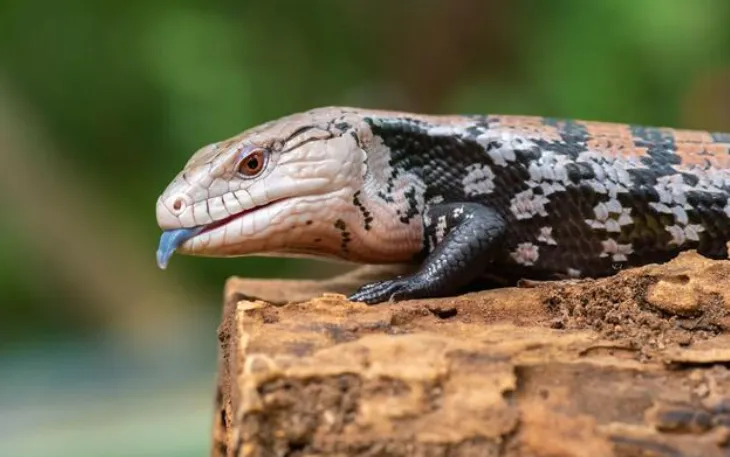Scientific Classification Quick Overview The Ornate Uromastyx, distinct for its vibrant coloration and intricate patterns, is a sought-after species among reptile enthusiasts. Hailing from the Arabian Peninsula, these desert dwellers have a robust build and a striking spiky tail, making them a standout in the Uromastyx family. Fast Facts Did you know? The term “ornata” …
Lizard
Scientific Classification Quick Overview The Egyptian Uromastyx, also known as the Egyptian Mastigure, is a fascinating and hardy desert reptile known for its spiky tail and vibrant coloration. Native to the deserts of Egypt and the Middle East, these lizards are herbivores and can live for a long time under proper care. Fast Facts Did …
Scientific Classification Quick Overview The Blue Tongue Skink, easily recognized by its vibrant blue tongue, is a large terrestrial lizard native to Australia, Indonesia, and Papua New Guinea. Their unique appearance and relatively calm disposition make them popular pets among reptile enthusiasts. Fast Facts Did you know? The Blue Tongue Skink uses its bright blue …
Scientific Classification Quick Overview The Green Anole (Anolis carolinensis), often referred to as the American chameleon due to its color-changing abilities, is a small tree-dwelling lizard native to the southeastern United States. While not true chameleons, these agile lizards are still a spectacle in their own right. Fast Facts Did you know? While they can’t …
Scientific Classification Quick Overview The Savannah Monitor (Varanus exanthematicus) is a medium-sized species of monitor lizard native to the savannas of Africa. Known for its robust build and relatively docile nature, it has gained popularity among reptile enthusiasts worldwide. Fast Facts Did you know? Savannah Monitors, like other monitor lizards, have forked tongues similar to …
Scientific Classification Quick Overview The Mourning Gecko (Lepidodactylus lugubris) is a small, nocturnal gecko known for its intriguing reproductive methods and soft chirping calls. Native to the Indo-Pacific region, these geckos have become established in various areas across the world due to their adaptability. Fast Facts Did you know? Mourning Geckos are parthenogenic, meaning they …
Scientific Classification Quick Overview The Bearded Dragon (Pogona vitticeps) has cemented its place as a beloved reptile pet around the globe. With its distinctive “beard”, alert expressions, and calm demeanor, it’s not hard to see why. Indigenous to the Australian deserts, these hardy reptiles are well-suited to captivity. Fast Facts Did you know? When threatened …
Scientific Classification Quick Overview The Leopard Gecko (Eublepharis macularius) stands out as a favorite reptile pet. Why? Its captivating spotted appearance and friendly nature. Originating from the arid regions of Asia, they’ve adapted impressively to captive environments. Fast Facts Did you know? Unlike most geckos, Leopard Geckos have eyelids, which is quite unusual for lizards. …
Diet Q: What do blue-tongue skinks eat in the wild? A: In the wild, blue-tongue skinks have a varied diet that includes insects, snails, small animals, flowers, fruits, and other vegetation. Their diet largely depends on their environment and what’s available seasonally. Q: What is a balanced diet for a captive blue-tongue skink? A: A …
If you’ve ever strolled through a garden in Florida or simply lounged in a backyard, you’ve likely had the pleasure of spotting one or two of the many lizards that call the Sunshine State home. But did you know that Florida is a hotspot for both native and invasive lizards? From the vibrant Green Anole, …










